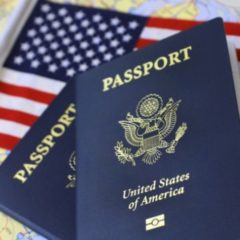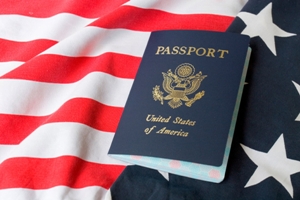You can have a Single or Multiple Entries Visa. What is the difference between a single entry and a multiple entry visa?
To find out which type you have look at the Visa stamp that was placed on your passport and look for the word “Entries”. There should be a number (“1”, “2”, etc) or a letter “M” under the word “Entries”. “M” means multiple visa, but if instead of this letter you have a number “1” that means that this is a single visa and you are only allowed to enter the U.S. one (1) time using this visa. If you have a different number like “2” that means that you are only allowed to enter the U.S. two (2) times using this visa.
Single Entry Visa
A Single Entry Visa is only valid for a one time entry in the U.S., therefore once this visa has been used to travel to the United States, if the visitor wants to travel again to the U.S., first must re-apply for another visa at his local U.S. consulate.

Multiple Entries Visa
The Multiple Visa Entry visa allows a person to go and come back to the U.S. on the same visa before the expiration of the visa. If the “entries” field on your visa shows “02” this means that you are allowed to enter the U.S. two (2) times with this visa. If the entries show “M” or “MULT” then you are allowed to enter the U.S. multiple times. In general, the B1/B2 visa allows you to enter the U.S. multiple times. You can enter and leave the U.S., and then enter and leave again in the future. However, re-entry is, dependent on your continued eligibility for the visa.
If you have been arrested or committed an illegal act which resulted in a warrant in your name since the time the visa was issued, you could be denied re-entry in the United States, or if you overstayed your visa then you also could be denied entry.
Re-entering the United States
During your visit to the U.S., you may visit Canada, Mexico, or the Caribbean islands (except Cuba) for up to 30 days and re-enter the U.S. again, as long as you re-enter within the period noted on the Form I-94 that you received when you first entered the U.S.
If while in the U.S. you visit other countries such as France or Panama and then return to the U.S., your re-entry will be considered to be a new admission, rather than a re-entry from a contiguous country in the course of your initial visit, and the admission inspection may be more strenuous.
The Officer inspecting you will want evidence that you intend to go back home to your country of legal residence as opposed to returning again and again to the U.S. after visits to other countries.
The B1 or B2 visa allows you to come to the U.S. as a visitor, but if the immigration officer suspects that you are actually trying to live as an illegal resident in the U.S., you will be denied entry.








